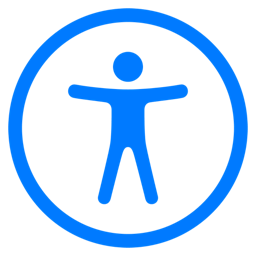FAQs
This is the text area for this paragraph. To change it, simply click and start typing.
What is AODA?
The Accessibility for Ontarians with Disabilities Act (AODA) is a law in Ontario, Canada, aimed at achieving accessibility for people with disabilities. It sets standards in areas like customer service, employment, transportation, and information and communication, including websites.
What is AODA compliance?
AODA compliance refers to meeting the standards set by the Accessibility for Ontarians with Disabilities Act. For websites, this means adhering to specific guidelines, such as the Web Content Accessibility Guidelines (WCAG) 2.0, Level AA, to ensure that digital content is accessible to all users, including those with disabilities.
What are the must-haves to be AODA compliant?
CHECK IF YOU ARE COMPLIANTTo be AODA compliant, your website must:To be AODA compliant, your website must adhere to the Web Content Accessibility Guidelines (WCAG) 2.0, Level AA standards. These include:
Text Alternatives:
Provide text alternatives (such as alt text) for all non-text content, like images, icons, and multimedia. This allows screen readers to convey the content to users who are visually impaired.
Adaptable Content:
Ensure that content is adaptable and can be presented in different ways (e.g., simpler layout) without losing meaning. This includes using proper HTML markup, ensuring logical structure, and avoiding content that relies solely on sensory characteristics (like color or shape).
Distinguishable Content:
Make it easier for users to see and hear content, including:
Providing sufficient contrast between text and background.
Ensuring that text can be resized up to 200% without loss of content or functionality.
Avoiding the use of images of text unless absolutely necessary.
Keyboard Accessibility:
Ensure that all website functionalities are accessible via a keyboard. This is crucial for users who cannot use a mouse, allowing them to navigate and interact with the website using keyboard commands alone.
Navigable Content:
Provide clear, consistent navigation and ways to help users find content, including:
Multiple ways to find pages (e.g., search features, site maps).
Descriptive headings and labels.
Clearly identifiable and consistent navigation menus.
Input Assistance:
Help users avoid and correct mistakes by:
Offering input assistance for forms (e.g., clear labels, error suggestions).
Providing a way to review and correct entries before submission.
Including contextual help and instructions where needed.
Multimedia Accessibility:
Ensure all multimedia content is accessible by:
Providing captions for all live and pre-recorded audio content in synchronized media (like videos).
Offering transcripts for audio-only content.
Including audio descriptions for video content when visual information is necessary to understand the content.
Time-Based Media:
Provide alternatives for time-based media, ensuring that users can access content presented in video or audio formats even if they cannot interact with these formats directly.
Adaptable and Distinguishable Interface:
Make sure that user interface components, like buttons and form fields, are both easily distinguishable and operable through various input methods, ensuring that they are perceivable by users with different needs.
By meeting these criteria, your website will comply with AODA and ensure a more accessible experience for all users, including those with disabilities. Regularly updating and testing your website is essential to maintain compliance as standards and technologies evolve.
Can people file accessibility complaints under AODA?
Yes, individuals can file complaints if they believe that an organization is not complying with AODA standards. Complaints can be submitted to the Ontario Human Rights Commission or the Accessibility Directorate of Ontario.
Is it a requirement for websites to be AODA compliant?
Yes, it is mandatory for organizations in Ontario, including public, private, and non-profit sectors, to ensure their websites are AODA compliant. The compliance deadlines vary depending on the size and type of the organization, with many being required to conform by January 1, 2021.
What is the fine for not being compliant?
CHECK IF YOU ARE COMPLIANTOrganizations that fail to comply with AODA can face fines of up to $100,000 per day for corporations and up to $50,000 per day for directors or officers. These fines underscore the importance of ensuring your website meets AODA standards.
How do we check if we are compliant?
RUN A FREE CHECKYou can check your website’s compliance by using an AODA compliance checker tool, which scans your site and provides a detailed report on areas of non-compliance. You can also consult with accessibility experts who can perform a comprehensive audit.
How much is the penalty?
ButtonPenalties for AODA non-compliance can be severe, with fines reaching up to $100,000 per day for corporations. These penalties can accumulate quickly, making it crucial for businesses to ensure their websites meet all accessibility standards.
How do we fix our website to make sure it is compliant?
ButtonTo make your website AODA compliant, you’ll need to:
Conduct a thorough accessibility audit to identify issues.
Implement changes to meet WCAG 2.0, Level AA standards, including text alternatives, keyboard accessibility, and more.
Regularly update and test your website to maintain compliance as standards evolve.
Consulting with an accessibility expert like Zerrow can streamline this process and ensure that your website meets all necessary requirements.
Do we need to file a report?
ButtonCertain organizations are required to submit an Accessibility Compliance Report to confirm they are meeting AODA standards. These reports must be filed every few years depending on the size and type of your organization.
How can we ensure we are legally protected?
To ensure legal protection, make sure your website is fully compliant with AODA standards. Regularly audit your site for accessibility, maintain detailed records of your compliance efforts, and provide training for your team on accessibility best practices. Partnering with experts like Zerrow can help you stay compliant and legally protected.
